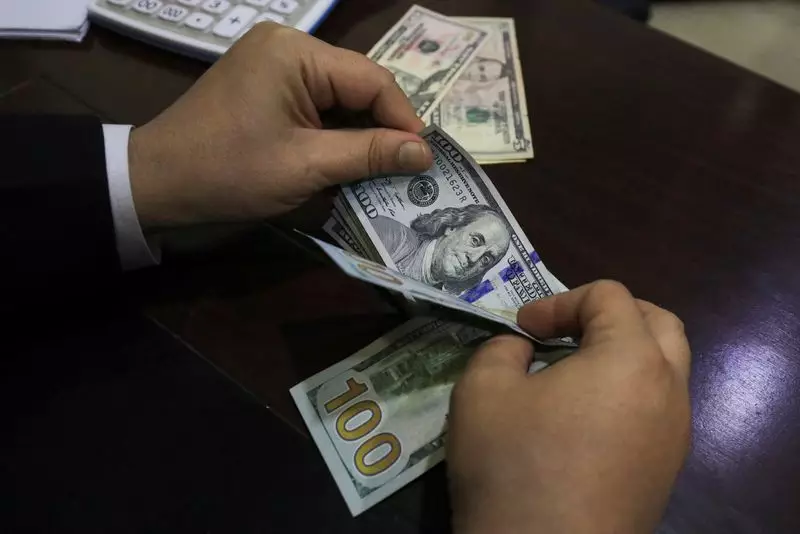The currency market is often a reflection of broader geopolitical dynamics and economic policies. Recently, the U.S. dollar found itself navigating turbulent waters as traders analyzed the implications of President-elect Donald Trump’s proposed tariffs. The currency showed signs of struggle against major counterparts, challenging previously held assumptions about its path forward.
On a Tuesday that saw the U.S. dollar nearing a one-week low, traders remained cautious. The dollar’s retreat against currencies like the euro and the British pound raised concerns. Analysts focused on a report from the Washington Post, which suggested that Trump’s advisers were contemplating a more nuanced approach to tariffs. Instead of the sweeping measures initially hinted at, plans appeared to evolve toward targeting specific sectors deemed critical to national security. This shift, if true, could alter the economic landscape considerably, leading traders to recalibrate their expectations and strategies.
The U.S. dollar index, which benchmarks the greenback against a mix of other major currencies, rebounded to 108.38 after falling to a low of 107.74. This bounce back, however, might not signify a robust recovery. Rather, it could reflect the market’s volatile nature, grappling between fear and optimism. The recent highs for the index were noted in early January, driven by promises of fiscal stimulus and regulatory changes perceived to spur economic growth. Still, skepticism lingered around the viability of Trump’s proposed 10-20% tariffs. Historically, such ambitious reforms often meet with significant pushback, and analysts like Chris Weston have voiced that outright implementation seemed unlikely.
As the dollar wobbled, the euro and pound experienced their own challenges. The euro saw a slight depreciation, falling to $1.03795 after reaching a one-week peak of $1.0437. Similarly, sterling was seen retreating from its prior session high of $1.2550, highlighting a trend where currency fluctuations were heavily intertwined with trader sentiment concerning U.S. policies. The nerves in the market can often lead to swift changes in currency values as traders sift through news and rumors.
On the other side, the dollar showed strength against the Japanese yen, climbing to 158.23—its most impressive performance since mid-July. This movement echoed the ongoing rise in U.S. Treasury yields, which often fuels investor confidence in the dollar. The context behind these movements reflects a market eager to make sense of the bigger economic picture, trying to align with emerging fiscal policies.
The situation was further complicated by developments in Canadian politics, where Prime Minister Justin Trudeau’s announcement of stepping down sparked fresh interest amongst traders. As the dollar edged up to C$1.4345, opinions reflected an unsettling notion that Canadian markets may view Trudeau’s proposed exit as a positive change for economic stability. Kyle Rodda noted that market performance often speaks volumes about investor sentiment, indicating that many believed the Canadian economy would benefit from a shift in leadership.
As these dynamics unfolded, the broader implications of political shifts were palpable, reiterating that currency trading is not merely a numbers game but also deeply entrenched in geopolitical narratives.
In a distinct segment of the financial markets, cryptocurrencies like Bitcoin showcased their own resilience despite broader economic apprehensions. Bitcoin gained about 0.9%, touching values around $102,560—marking its highest level since December. This upward momentum comes as a stark contrast to traditional currencies’ struggles, suggesting that alternative assets may be seen as a hedge against the evolving economic landscape.
Market participants appear eager to embrace digital assets as they seek diversified investment strategies amidst uncertain times in the fiat currency realm. As regulatory discussions continue, and economic policies evolve under the incoming administration, the juxtaposition between traditional and digital currencies is becoming increasingly apparent.
Overall, the current market conditions underscore the complexities involved in currency trading, reflecting a blend of economic indicators, political changes, and emerging trends in alternative assets. The road ahead for the U.S. dollar remains unpredictable, a testament to the intricate dance between policy, economic fundamentals, and trader sentiment.

